Dividends – Everything You Need to Know
Introduction
If you are new to the stock market, you would have heard about the term “dividend” a lot or would have seen headlines like some big companies like Maruti, ICICI bank, etc. announce dividends
So, when we see all this, we get a lot of questions in mind.
What exactly are these dividends? Which companies give out these dividends? And how do we find these companies? Should we invest in them?
Well, now, we will answer all these questions using practical, real-life examples.
So, as an investor, you have two ways of making money.
The first is when the share price goes up. If you bought a stock at 100 rupees and the share price goes to 150, you made 50% returns on your investment. This is the most obvious way of making money and most of us come to the stock market to make money that way and this method is also called capital appreciation.
However, there is one catch here that the profit you see is on paper and it’s not real money. It’s an unrealized profit.
For example, I am sitting on all this profit but it is an unrealized profit. This is just an illusion, at least at this point. What if the market crashes from here and all the profits would be gone. The limitation of capital appreciation is that the shares have to be sold to see money in your bank account.
But, there is a second way you can make money in investing where you don’t have to sell the shares to make money and that is through dividends.
What are dividends?
In simple terms, dividends are the profits that companies share with their investors.
You see what happens is that
When a company makes a profit, the management of the company has to decide what should they do with that money?
Well, they have 2 choices-
The first choice is to reinvest the profit in the business; hire more employees, build more factories, add new product lines, and expand in new countries, i.e. do something to grow the business.
The second choice is to distribute some or all of that money to their shareholders. The management can say that we don’t have any aggressive plans for expansion this year and so why don’t we just distribute the profits among investors?
So, this profit right here, that is distributed among investors is called “dividends”.
Let us take a real-life example to understand both capital appreciation and dividends
I am an investor in Britannia and am picking one of the stocks from the portfolio.
My capital has appreciated by 50% as of now but this profit is still unrealized. This money is not real until I sell these shares, but the problem is that I am a long-term investor in Britannia and I don’t want to sell these shares. So, does that mean I would just have to wait till I finally decide to sell them?
Not really. As an investor of Britannia, I also keep getting regular dividends from the company.
Last year, I got this email from the company.
The good people @ Britannia told that “Dear Venkat, you have been an awesome investor of this company so we are rewarding you with a dividend of 83 rupees per share and so let’s see I had 25 shares.
I didn’t have to do anything because these guys just transferred the dividend directly to my bank account…
Not just Britannia, I got dividends from all these companies last year.
It’s almost like being a landlord with all these properties. I keep getting rental income from all these stocks and it’s awesome.
I am not the only one who loves dividend income.
Take Warren Buffett for example.
He has had an affinity for dividend-yielding stocks and in the last financial year, he is reported to have collected almost 4 billion dollars from just these 6 companies. That’s the power of dividends.
So, let us go over all the reasons why investors such as Warren Buffett love dividends so much.
- A dividend is passive income.
- As you saw in my case, I didn’t have to do anything. I just get an SMS that this company has transferred dividends to my bank account
- Use the money whichever way you want
- A dividend is a Steady income
- Many retirees or conservative investors look for dividends as their regular source of income
- Income in bad markets
- In bear markets, when the share prices are not going up, the companies still give our dividends which keeps the investors happy
These are all the reason dividends are so popular. Investing in dividend-yielding stocks is identified as a separate branch of investing called “dividend investing “and some investors even identify themselves as “dividend investors”.
But, one thing to note is that the culture of dividend investing is much more prevalent in developed economies such as the US and Europe.
Indian companies have been a little conservative in sharing their profits in the past but are getting better though. Some companies like Hindalco have opened their wallets and shared the profits with their investors. I hope other companies would follow suit.
These are some other examples of high dividend-paying stocks
Let’s see the other side of the coin and let’s see some disadvantages of investing in dividend-yielding stocks:
- High dividend-yielding companies have lower growth prospects
Remember the management’s dilemma? …to reinvest or to distribute the profits.
As much as I like getting dividends, I also should ask if the company is distributing the profits, doesn’t it mean that they are out of ideas as to what to do with that money? Why don’t they build new factories, why don’t they spend more on R&D, why don’t they add new product lines? By doing all this, their sales will increase and share prices would go up.
So, the reality is that high dividend-yielding stocks are typically large-cap companies with a stable source of income and they are leaders in their sectors but, at the same time, they also have lower growth prospects in the saturated market and that’s the reason they give out dividends rather than reinvesting.
A high-interest rate environment can cause investors to sell these stocks and put money in bonds or fixed deposits
A lot of dividend investors are looking for some kind of stable returns and when the interest rates are down, they put their money in these dividends yielding stocks. But happens if the rates start to go back up and their banks start to give 8% or 10% returns? Well, now, they don’t have any reason to take the risk of the stock market and they just sell
- Dividend cut – uncertainty due to change in management
Ok, so those were the pros and cons of dividend investing
Now, let’s understand a very important concept in dividends and that is of
Dividend Yield
Let’s say that I have invested 1 lakh rupees in 2 companies – Company A and Company B
Both of them give me a dividend of 10 rupees per share. So, can we say that both the companies are same in terms of giving dividend?
No, because we don’t know the number of shares. I own shares in each of these companies and so if company A’s share price is 50 rupees, I have 2000 shares of company A and if company B’s share price is at 400 rupees, I have only 250 shares of company B.
With this piece of information, it becomes easier to compare and so, I will get 20,000 rupees from company A and only 2500 rupees from company B.
That’s why for comparing companies in terms of dividends, we cannot just compare based on the absolute amount of dividends per share. We need to use a metric called “Dividend Yield”, which is nothing but the dividend per share/share price so that we are making a fair comparison.
In this case, the dividend yield of company A would be 20% whereas that of company B would be only 2.5%
Frequently asked questions
· At what frequency can investors expect these dividends? Is it given out weekly, monthly, quarterly or what?
Usually, the dividends are usually declared annually and they are called “final dividends” but companies sometimes can also issue “interim” dividends during the year. There is no hard and fast rule that it has to be once only.
Companies like MRF have declared dividends 3 times a year also.
· What about the amount? How much can you expect?
The dividend yield varies from one company to another. Some companies like IOC have yielded as high as XYZ whereas some companies have as low as ABC.
Companies are not obligated to issue a certain fixed amount in dividends. Just because they have issued dividends in the past doesn’t guarantee that they would keep doing so in future.
For example, investors of BPCL (including myself), got disappointed when they were expecting a hefty dividend from the company but the management said,” No, we are going to keep the money”
They are not obligated to issue dividends at all. It’s completely up to the Board of Directors and the management to decide how best to deploy the profits they have earned. So, don’t think that it’s a done deal, It is unlike a fixed deposit interest that you would keep getting periodically.
Generally speaking, dividend giving companies keep giving dividends, unless something changes either in their management or their policies.
· Are dividends always be in the form of cash?
Sometimes companies give out dividends in the form of shares but by far the most common way is cash and that’s good because in my opinion Cash is King.
Here are 3 pieces of advice I would give:
- Don’t invest in companies just for dividends. See, a lot of people would give you an example of IOC….look how much dividend it has given not many would discuss the stock’s performance Example of IOC
- Consistency of dividends is important
- Have a balance between growth and dividend stocks
This was our first part to cover dividends, but there is a lot more about dividends
For example.
- Taxation of dividend income – how much tax are you going to pay on dividends received?
- Importance dates related to dividends – very important to understand
- Impact of dividend on the stock price – as we saw in the case of BPCL and a very interesting case study of a company named Majesco
- When should you exit the companies that you invested in for dividends?
- Difference of dividends between stocks and mutual funds
So, there is a lot to be understood, a lot needs to be learned….if you guys are serious about learning these other aspects of dividend investing, let us know in the comments below.
If you are serious about learning, we are serious about sharing.
Howdy!
If you’re here for the first time, let’s get introduced.
VRD Nation is India’s premier stock market training institute and we (Team VRD Nation) are passionate about teaching each and every aspect of investing and trading.
If you’re here for the first time, don’t forget to check out “Free Training” section where we have tons of free videos and articles to kick start your stock market journey.
Also, we got two awesome YouTube channels where you can continue the learning process.
Must-Read Articles
Dividends – Everything You Need to Know
Introduction
If you are new to the stock market, you would have heard about the term “dividend” a lot or would have seen headlines like some big companies like Maruti, ICICI bank, etc. announce dividends
So, when we see all this, we get a lot of questions in mind.
What exactly are these dividends? Which companies give out these dividends? And how do we find these companies? Should we invest in them?
Well, now, we will answer all these questions using practical, real-life examples.
So, as an investor, you have two ways of making money.
The first is when the share price goes up. If you bought a stock at 100 rupees and the share price goes to 150, you made 50% returns on your investment. This is the most obvious way of making money and most of us come to the stock market to make money that way and this method is also called capital appreciation.
However, there is one catch here that the profit you see is on paper and it’s not real money. It’s an unrealized profit.
For example, I am sitting on all this profit but it is an unrealized profit. This is just an illusion, at least at this point. What if the market crashes from here and all the profits would be gone. The limitation of capital appreciation is that the shares have to be sold to see money in your bank account.
But, there is a second way you can make money in investing where you don’t have to sell the shares to make money and that is through dividends.
What are dividends?
In simple terms, dividends are the profits that companies share with their investors.
You see what happens is that
When a company makes a profit, the management of the company has to decide what should they do with that money?
Well, they have 2 choices-
The first choice is to reinvest the profit in the business; hire more employees, build more factories, add new product lines, and expand in new countries, i.e. do something to grow the business.
The second choice is to distribute some or all of that money to their shareholders. The management can say that we don’t have any aggressive plans for expansion this year and so why don’t we just distribute the profits among investors?
So, this profit right here, that is distributed among investors is called “dividends”.
Let us take a real-life example to understand both capital appreciation and dividends
I am an investor in Britannia and am picking one of the stocks from the portfolio.
My capital has appreciated by 50% as of now but this profit is still unrealized. This money is not real until I sell these shares, but the problem is that I am a long-term investor in Britannia and I don’t want to sell these shares. So, does that mean I would just have to wait till I finally decide to sell them?
Not really. As an investor of Britannia, I also keep getting regular dividends from the company.
Last year, I got this email from the company.
The good people @ Britannia told that “Dear Venkat, you have been an awesome investor of this company so we are rewarding you with a dividend of 83 rupees per share and so let’s see I had 25 shares.
I didn’t have to do anything because these guys just transferred the dividend directly to my bank account…
Not just Britannia, I got dividends from all these companies last year.
It’s almost like being a landlord with all these properties. I keep getting rental income from all these stocks and it’s awesome.
I am not the only one who loves dividend income.
Take Warren Buffett for example.
He has had an affinity for dividend-yielding stocks and in the last financial year, he is reported to have collected almost 4 billion dollars from just these 6 companies. That’s the power of dividends.
So, let us go over all the reasons why investors such as Warren Buffett love dividends so much.
- A dividend is passive income.
- As you saw in my case, I didn’t have to do anything. I just get an SMS that this company has transferred dividends to my bank account
- Use the money whichever way you want
- A dividend is a Steady income
- Many retirees or conservative investors look for dividends as their regular source of income
- Income in bad markets
- In bear markets, when the share prices are not going up, the companies still give our dividends which keeps the investors happy
These are all the reason dividends are so popular. Investing in dividend-yielding stocks is identified as a separate branch of investing called “dividend investing “and some investors even identify themselves as “dividend investors”.
But, one thing to note is that the culture of dividend investing is much more prevalent in developed economies such as the US and Europe.
Indian companies have been a little conservative in sharing their profits in the past but are getting better though. Some companies like Hindalco have opened their wallets and shared the profits with their investors. I hope other companies would follow suit.
These are some other examples of high dividend-paying stocks
Let’s see the other side of the coin and let’s see some disadvantages of investing in dividend-yielding stocks:
- High dividend-yielding companies have lower growth prospects
Remember the management’s dilemma? …to reinvest or to distribute the profits.
As much as I like getting dividends, I also should ask if the company is distributing the profits, doesn’t it mean that they are out of ideas as to what to do with that money? Why don’t they build new factories, why don’t they spend more on R&D, why don’t they add new product lines? By doing all this, their sales will increase and share prices would go up.
So, the reality is that high dividend-yielding stocks are typically large-cap companies with a stable source of income and they are leaders in their sectors but, at the same time, they also have lower growth prospects in the saturated market and that’s the reason they give out dividends rather than reinvesting.
A high-interest rate environment can cause investors to sell these stocks and put money in bonds or fixed deposits
A lot of dividend investors are looking for some kind of stable returns and when the interest rates are down, they put their money in these dividends yielding stocks. But happens if the rates start to go back up and their banks start to give 8% or 10% returns? Well, now, they don’t have any reason to take the risk of the stock market and they just sell
- Dividend cut – uncertainty due to change in management
Ok, so those were the pros and cons of dividend investing
Now, let’s understand a very important concept in dividends and that is of
Dividend Yield
Let’s say that I have invested 1 lakh rupees in 2 companies – Company A and Company B
Both of them give me a dividend of 10 rupees per share. So, can we say that both the companies are same in terms of giving dividend?
No, because we don’t know the number of shares. I own shares in each of these companies and so if company A’s share price is 50 rupees, I have 2000 shares of company A and if company B’s share price is at 400 rupees, I have only 250 shares of company B.
With this piece of information, it becomes easier to compare and so, I will get 20,000 rupees from company A and only 2500 rupees from company B.
That’s why for comparing companies in terms of dividends, we cannot just compare based on the absolute amount of dividends per share. We need to use a metric called “Dividend Yield”, which is nothing but the dividend per share/share price so that we are making a fair comparison.
In this case, the dividend yield of company A would be 20% whereas that of company B would be only 2.5%
Frequently asked questions
· At what frequency can investors expect these dividends? Is it given out weekly, monthly, quarterly or what?
Usually, the dividends are usually declared annually and they are called “final dividends” but companies sometimes can also issue “interim” dividends during the year. There is no hard and fast rule that it has to be once only.
Companies like MRF have declared dividends 3 times a year also.
· What about the amount? How much can you expect?
The dividend yield varies from one company to another. Some companies like IOC have yielded as high as XYZ whereas some companies have as low as ABC.
Companies are not obligated to issue a certain fixed amount in dividends. Just because they have issued dividends in the past doesn’t guarantee that they would keep doing so in future.
For example, investors of BPCL (including myself), got disappointed when they were expecting a hefty dividend from the company but the management said,” No, we are going to keep the money”
They are not obligated to issue dividends at all. It’s completely up to the Board of Directors and the management to decide how best to deploy the profits they have earned. So, don’t think that it’s a done deal, It is unlike a fixed deposit interest that you would keep getting periodically.
Generally speaking, dividend giving companies keep giving dividends, unless something changes either in their management or their policies.
· Are dividends always be in the form of cash?
Sometimes companies give out dividends in the form of shares but by far the most common way is cash and that’s good because in my opinion Cash is King.
Here are 3 pieces of advice I would give:
- Don’t invest in companies just for dividends. See, a lot of people would give you an example of IOC….look how much dividend it has given not many would discuss the stock’s performance Example of IOC
- Consistency of dividends is important
- Have a balance between growth and dividend stocks
This was our first part to cover dividends, but there is a lot more about dividends
For example.
- Taxation of dividend income – how much tax are you going to pay on dividends received?
- Importance dates related to dividends – very important to understand
- Impact of dividend on the stock price – as we saw in the case of BPCL and a very interesting case study of a company named Majesco
- When should you exit the companies that you invested in for dividends?
- Difference of dividends between stocks and mutual funds
So, there is a lot to be understood, a lot needs to be learned….if you guys are serious about learning these other aspects of dividend investing, let us know in the comments below.
If you are serious about learning, we are serious about sharing.

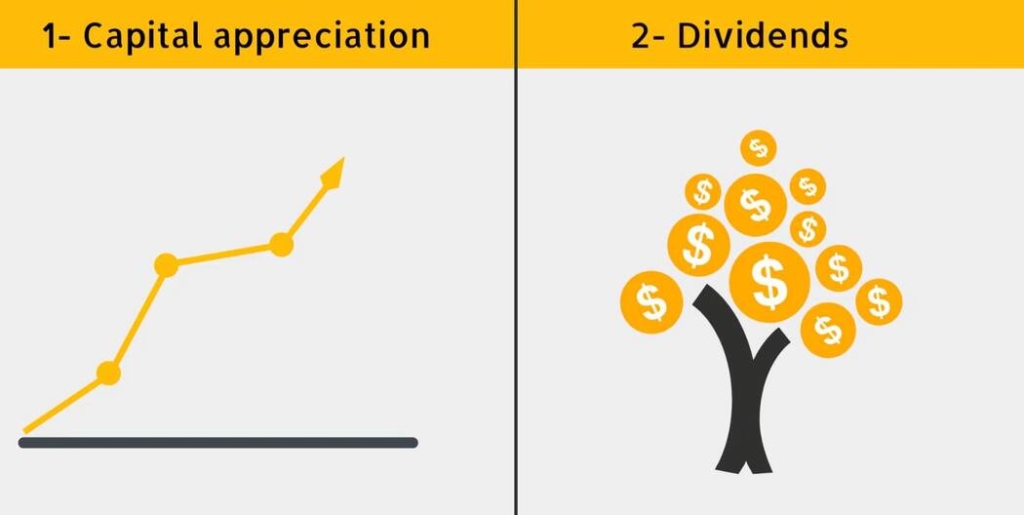
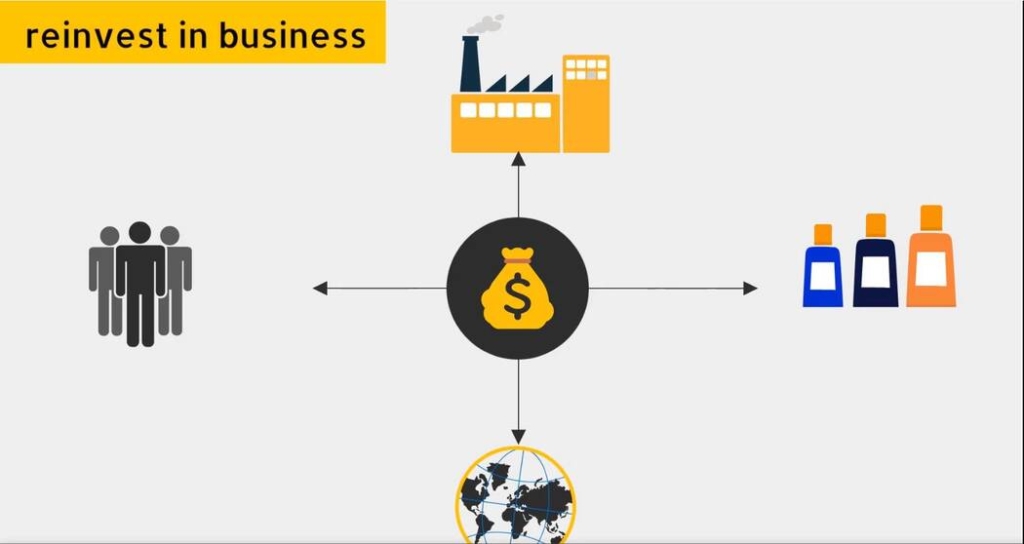
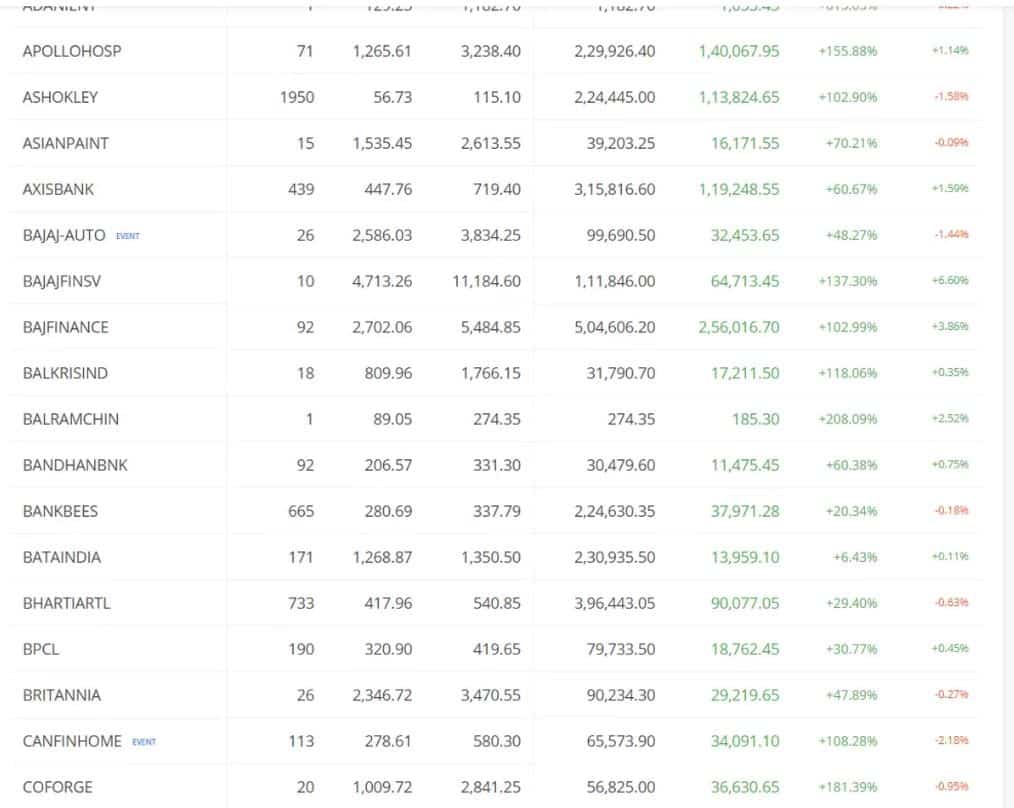
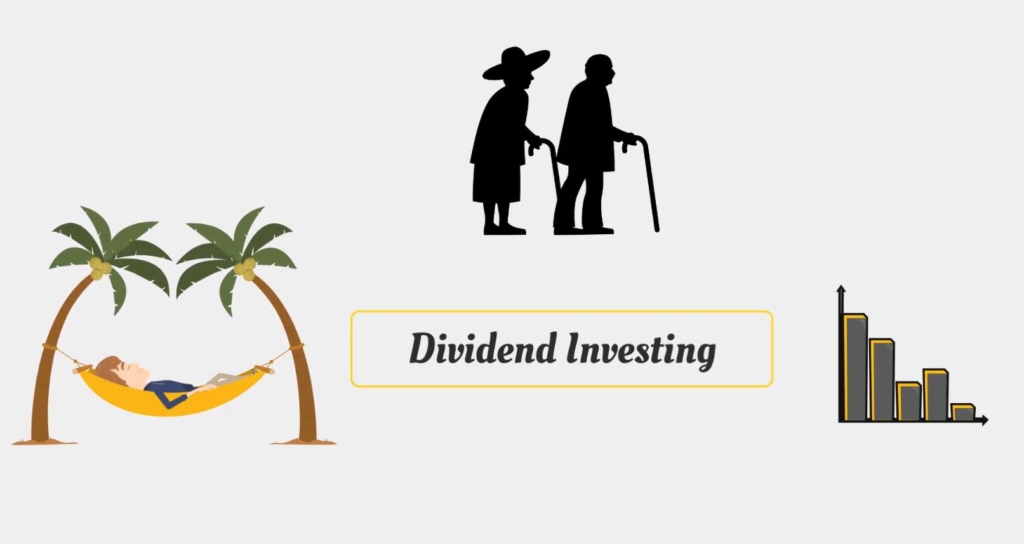










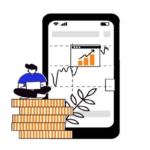




![What is Virtual Contract Note [Zerodha]](https://www.vrdnation.com/wp-content/uploads/2023/10/maxresdefault-virtual-note-500x383.jpg)



Leave A Comment